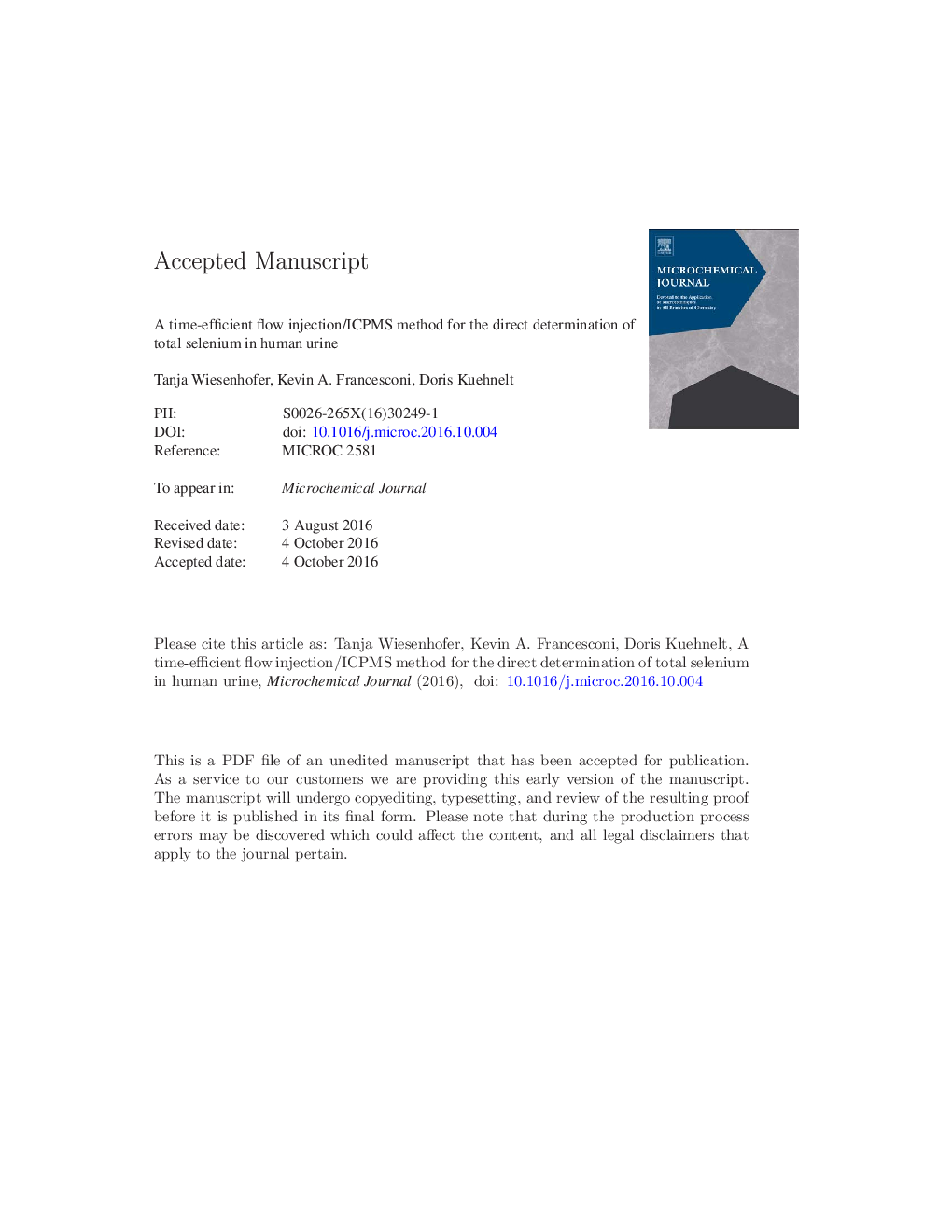| Article ID | Journal | Published Year | Pages | File Type |
|---|---|---|---|---|
| 7641249 | Microchemical Journal | 2017 | 20 Pages |
Abstract
Selenium, an essential trace element with many biochemical functions, shows toxic effects at elevated intake. Therefore, it is important to monitor the selenium body status e.g. by investigating total selenium in biological fluids like urine. Inductively coupled plasma mass spectrometry (ICPMS) is a robust technique with low limits of detection for the determination of total selenium in body fluids. When flow injection (FI) is used to introduce the sample to the ICPMS, low sample volumes can be investigated directly, without time-consuming digestion steps. We describe a time-efficient method for determining total selenium in urine using a simple filtration step for sample preparation and measurement by FI/ICPMS. Quantification was based on external calibration without time-consuming standard addition approaches. Matrix effects occurring when urine is analysed directly without dilution were minimized by splitting the flow of the carrier solution, by optimizing the injection volume, and by using germanium as internal standard. Best results were obtained with 20 mM malonate 3% methanol pH 6.0 containing 50 μg Ge Lâ 1 as carrier solution at a flow rate of 1.5 mL minâ 1, whereby 15% of the carrier solution was directed to the ICPMS by a passive splitter, and an injection volume of 5 μL. The method limit of detection (LOD) and quantification (LOQ) in urine were 0.07 μg Se Lâ 1 and 0.2 μg Se Lâ 1, respectively. The accuracy of the method was evaluated by (i) the certified reference material NIES No. 18 Human urine and (ii) comparison of FI/ICPMS results for different urine samples with target concentrations obtained by ICPMS after microwave-assisted acid digestion. Urine samples could be stored at 4 °C for at least 4 days, before the formation of volatile selenium compounds led to overestimated results. Intra-day precision for the determination of total selenium in urine was about 3% (n = 3) and inter-day precision about 5% (n = 3). Simple sample preparation by only filtration, a short analysis time, and the low requirement for sample volume makes the method very useful particularly for large numbers of samples and samples for which only limited volumes are available.
Keywords
Related Topics
Physical Sciences and Engineering
Chemistry
Analytical Chemistry
Authors
Tanja Wiesenhofer, Kevin A. Francesconi, Doris Kuehnelt,
